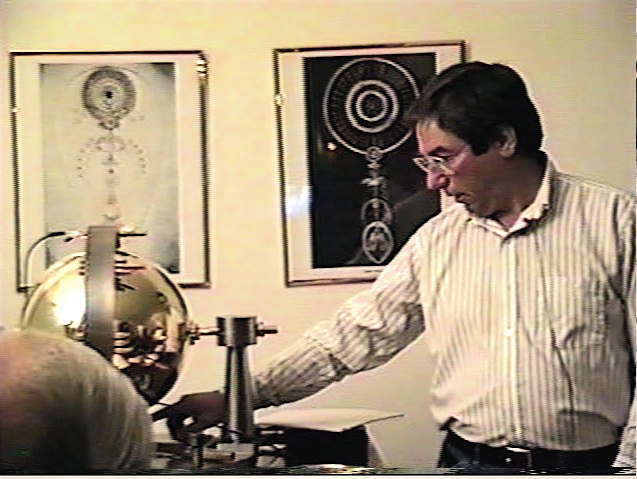 |
| In court? Need assistance? Jurisdictionary |
 |
| Your Own Credit Repair Business |
|
Topic: John Keely's
Laws of Harmony Section: Law of Chemical Affinity Table of Contents to this Topic |
|
"Atoms whose atomic pitches are in either unison, harmonic or concordant ratios, unite to form molecules. Corollary: When two atoms are indifferent, they may be made to unite by varying the pitch of either, or both. Scholium: This necessitates the construction of tables, representing variation of atomic pitches by temperature, pressure, etc. Scholium: Tables of all harmonics and concords, and harmonics founded upon a normal harmonic scale, are equally essential. Scholium: Optical instruments may be made to measure pitches of energy." Commentary December, 1987 This law is fundamental to the basic concept of sympathetic vibratory physics. Concord or harmony causes unition of elements while discord causes separation or dissociation. One must always keep in mind that he is not referring to a single vibration but to a chord of vibrations. In today's parlance we would call this a vibration signature. However, in my estimation a vibration signature is a passive measurement of a group of associated vibrations whereas a chord of vibration is a properly determined set of specific frequencies one would use as a tool. In other words, a signature is passive and a chord is causative. The corollary above says that indifferent elements may be united by changing the rate of either element. An element not in harmony made be rendered into a concordant condition (matching frequencies) by increasing or decreasing its vibrations. A simple way of doing this, as everyone knows or should know, is by simply heating one or both of the elements. Heat is a vibration and when applied to a mixture will bring about a commonalty of frequencies such that the two previously unrelatable elements will relate and merge (unify themselves) into a common substance. Another great source of vibratory motion is water. The molecular vibrations of water have the same effect (in the final analysis) as heat. Table of atomic pitches can easily be prepared and then matched with computers. The various possible positions of frequencies can be related from element to element similar to what I've done with the previously mentioned Music Interval Spreadsheet (see SVP March, 1987 page 5). By matching the various frequencies the points of harmony and discords are readily discernible and this data may be used to predict the mixability and conditions of mixability of various elements or compounds, etc.. The last part of the scholiums indicates instruments can be made to measure frequencies. Remember this law was published in 1894 and what we have today was simply unknown. Today we have electron micro-scopes which operate via UV, X-Ray and electron frequencies. We also have a device called a spectrometer which uses band-pass filters and also measures frequencies. I don't know when these and other similar devices were invented but their existence demonstrated once again that Keely was a few years ahead of his time. |
| See Also: |
 |
